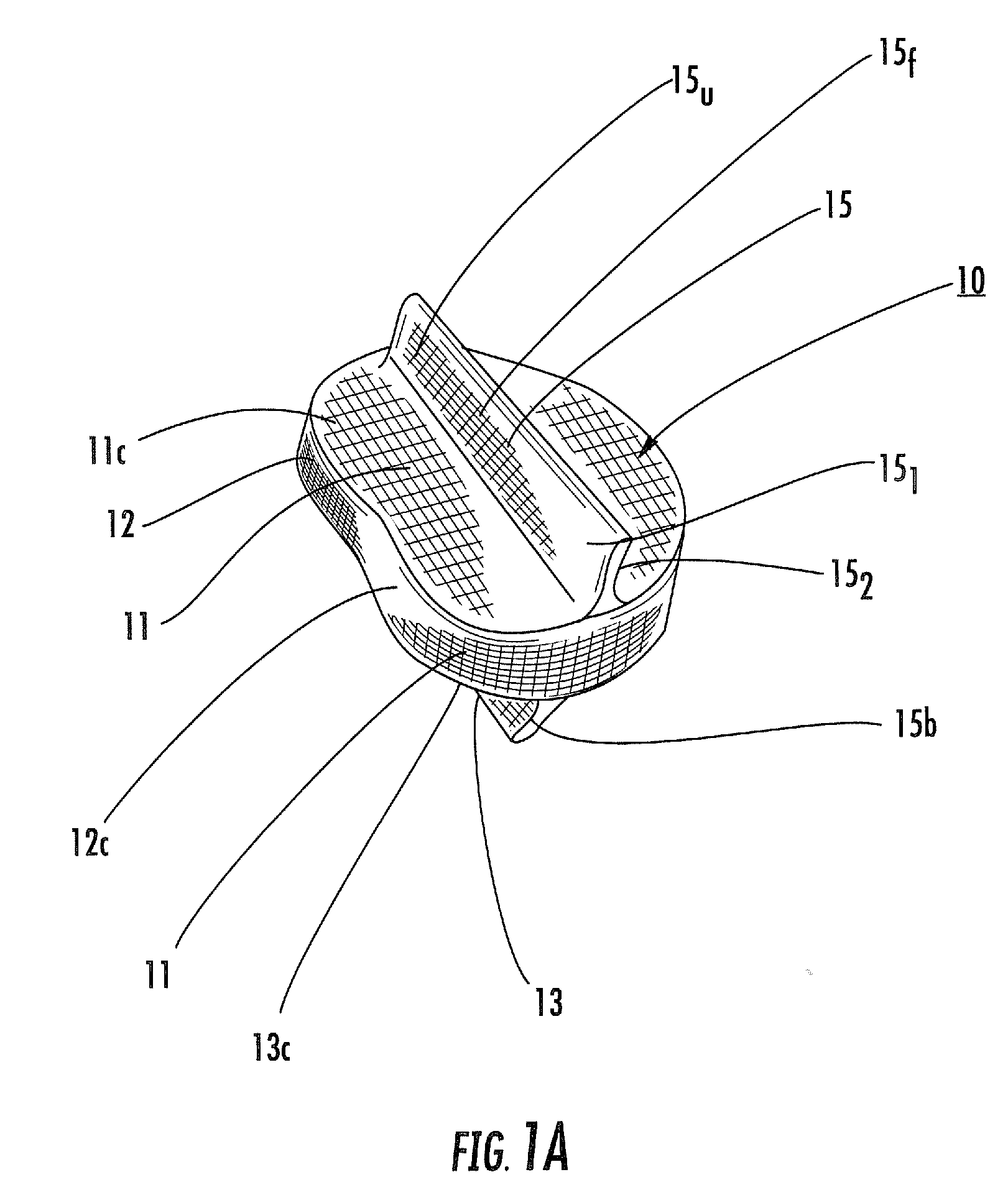Spinal disc implants with flexible keels and methods of fabricating implants
a technology of flexible keels and implants, applied in the field of implants, can solve the problems of affecting the function of the spinal disc, and affecting the function of the spinal disc, and achieve the effect of sufficient rigidity
- Summary
- Abstract
- Description
- Claims
- Application Information
AI Technical Summary
Benefits of technology
Problems solved by technology
Method used
Image
Examples
Embodiment Construction
[0013] Embodiments of the invention are directed to spinal implants with flexible keels.
[0014] Other embodiments are directed to methods of fabricating flexible spinal disc implants with flexible keels and / or fabrication molds therefor.
[0015] The flexible keels can comprise a biocompatible mesh material such as a polyester fabric and the TDR spinal implants may further comprise a crystalline poly(vinyl alcohol) (PVA) hydrogel. In some embodiments, the flexible keels can include a plurality of spaced apart bone / tissue in-growth apertures. The flexible keels can be configured to bend (slightly) and / or move side-to-side while having sufficient rigidity to maintain a generally upwardly or downwardly extending orientation outside the body.
[0016] Other embodiments are directed to spinal implant fabrication molds. The molds include: (a) a mold having a three-dimensional shape substantially corresponding to that of a natural spinal disc, the mold having a cavity with an upstanding sidewa...
PUM
| Property | Measurement | Unit |
|---|---|---|
| Temperature | aaaaa | aaaaa |
| Temperature | aaaaa | aaaaa |
| Thickness | aaaaa | aaaaa |
Abstract
Description
Claims
Application Information
 Login to View More
Login to View More - R&D
- Intellectual Property
- Life Sciences
- Materials
- Tech Scout
- Unparalleled Data Quality
- Higher Quality Content
- 60% Fewer Hallucinations
Browse by: Latest US Patents, China's latest patents, Technical Efficacy Thesaurus, Application Domain, Technology Topic, Popular Technical Reports.
© 2025 PatSnap. All rights reserved.Legal|Privacy policy|Modern Slavery Act Transparency Statement|Sitemap|About US| Contact US: help@patsnap.com



